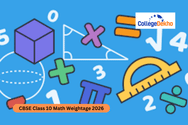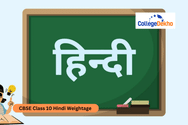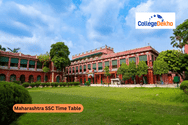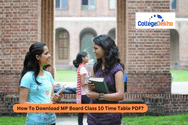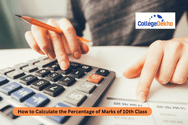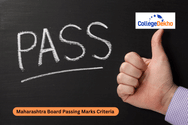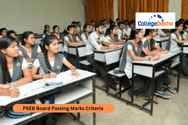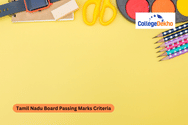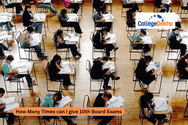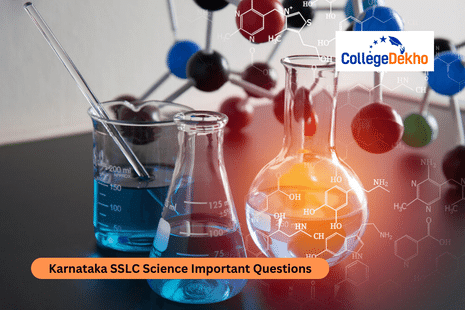

Never Miss an Exam Update
Karnataka SSLC Science Important Questions 2026 are from the topics carrying the maximum weightage in the exam. As per the latest exam pattern, the chapters with the highest weightage are Chemical Reactions and Equations, Acids, Bases and Salts, Metals and Non-metals in Chemistry, Heredity and Evolution, Our Environment in Biology, Light, Electricity, and Magnetic Effects of Electric Current in Physics. Based on the previous year's question papers, we have provided a variety of important questions, which are multiple-choice questions of 1 mark, very short answer, short answer of 2 marks, descriptive of 3 marks, and long answer of 4 marks, with a few 5 marks questions as well. Continue reading the article to know more about what are the Karnataka SSLC Science Important Questions for 2026.
Also Check
Karnataka SSLC Science Model Papers 2025-26
Karnataka SSLC Science Important Questions 2026 for 1 Mark
The 1 mark questions are provided in all three sections, including Physics, Chemistry and Biology. Here are some of the 1 mark important questions that have been provided based on the last few years' question papers:
-
The device used to produce electricity is
a) Galvanometer b) Electric generator c) Ammeter d) Electric motor. -
The correct formula that shows the relationship between potential difference, electric current and resistance in an electric circuit is
a) I = V R b) I = VR c) V = R I d) R = I V . -
In Fleming’s right hand rule, the middle finger indicates the direction of
a) induced electric current b) magnetic field c) motion of the conductor d) mechanical force. -
Write the symbols of the following components used in an electric circuit.
i) Rheostat ii) Wires crossing without joining - Magnetic field lines do not intersect each other. Why?
- Mention the SI unit of power of lens.
- What does the thumb indicate in the right hand thumb rule?
-
A non-metallic oxide reacts with base and produces salt and water. Then the property of this non-metallic oxide is
A) acidic (B) basic (C) neutral (D) amphoteric - State Mendeleev’s periodic law.
- Potassium is kept immersed in kerosene. Why?
- How many electrons are shared to form hydrogen molecule.
-
“A person immediately starts running soon after observing a snake.” The correct transmission path of reflex impulse in this situation is -
(A) Receptor → Sensory neuron → Brain → Relay neuron → Motor neuron → Effector (B) Receptor → Sensory neuron → Spinal cord → Relay neuron → Motor neuron → Effector (C) Effector → Spinal cord → Sensory neuron → Relay neuron → Motor neuron → Receptor (D) Effector → Motor neuron → Relay neuron → Brain → Sensory neuron → Receptor
Karnataka SSLC Science Important Questions 2026 for 2 Marks
Here are some of the 2 marks important questions that have been provided based on the last few years' question papers:- Light enters from air to benzene having refractive index 1·50. Calculate the speed of light in benzene. ( Speed of light in air is 3 × 108 ms -1 )
- A concave lens has focal length of 12 cm. At what distance should the object from the lens be placed so that it forms an image at 9 cm from the lens ?
- Name the major constituent of biogas and write the properties of biogas.
- List the hazards of nuclear power generation.
- Draw the diagram of arrangement of apparatus to show that acid solution in water conducts electricity and label dilute HCl solution.
- Write the structural arrangement of isomers of butane.
- Draw the diagram of arrangement of apparatus to show the action of steam on a metal.
- List the differences between the biodegradable substances and non-biodegradable substances.
Karnataka SSLC Science Important Questions 2026 for 3 Marks
Here are some of the 3 marks important questions that have been provided based on the last few years' question papers:- State Ohm’s law. On which factors does the resistance of a conductor depend ? Mention the SI unit of electric power.
- State Joule’s law of heating. How is fuse connected in the circuits ? Name the metal used in the filament and the gas filled in electric bulb.
- The resistors R 1 , R 2 , and R 3 have the values 10 Ω, 20 Ω and 60 Ω respectively, which have been parallelly connected to a battery of 24 V in an electric circuit. Then calculate the following. i) The current flowing through each resistor ii) The total current in the circuit iii) The total resistance of the circuit.
- Draw the ray diagram for the image formation in a convex lens when the object is placed beyond 2 F 1 . Mention the position and nature of the image formed. [ F 1 : Principal focus of the lens ]
- Depict the formation of magnesium chloride with the help of electron dot structure.
- a) Why is aluminium oxide called an amphoteric oxide ? b) 83-E Write the differences between the physical properties of metals and non-metals.
- What is pollination ? What are the changes that occur in the flower after pollination ?
- Which type of chemical reaction takes place when an iron nail is dipped in copper sulphate solution ? Why ? Write a balanced chemical equation for this chemical reaction.
- When a tall ( TT ) pea plant is crossed with a dwarf ( tt ) pea plant, represent the result obtained in F2 generation of monohybrid cross with the help of checker board and mention the ratio of varieties of plants.
- What are fossils ? Mention the methods of estimation of dating fossils and explain briefly.
Karnataka SSLC Science Important Questions 2026 for 4 Marks
Here are some of the 4 marks important questions that have been provided based on the last few years' question papers:- a) What is solenoid ? Write the properties of the magnetic field lines formed around a current carrying solenoid. b) What is alternating current ? Electric appliances having metallic body are connected to earth wire. Why ?
- a) What are functional groups ? Name the functional group present in propanal and write the structure of this compound. b) Write the molecular formula and electron dot structure of ethane.
- Draw the diagram showing the structure of human brain. Label the following parts. i) Hypothalamus ii) Pons.
- Write any four differences between aerobic and anaerobic respiration.
- Explain the role of xylem and phloem tissues in the transportation of materials in plants.
- Draw the diagram showing the structure of the human brain and label the following parts : i) Cerebrum ii) Cerebellum.
- Which molecule is formed during the first step of cellular respiration by the breakdown of glucose molecule in cytoplasm ? Mention the types of respiration and write any two differences between them.
Karnataka SSLC Science Important Questions 2026 for 5 Marks
Here are some of the 5 marks important questions that have been provided based on last few years' question papers:- a) Define focal length, principal axis and aperture of the spherical lens. b) State two laws of refraction of light.
- a) How does rainbow form in the nature ? Explain. Mention the colour of the light that bends the most and that bends the least. b) How does the eye lens accommodate to see the distant objects and nearby objects ? Explain.
- a) What is refraction of light ? State two laws of refraction of light. b) What is refractive index of light ? “The refractive index of diamond is 2·42.” What is the meaning of this statement ?
- What is refraction of light ? State two laws of refraction of light. What is refractive index of light ? “The refractive index of diamond is 2·42.” What is the meaning of this statement ?
Are you feeling lost and unsure about what career path to take after completing 12th standard?
Say goodbye to confusion and hello to a bright future!

Was this article helpful?









